Learning Low-Shot Generative Networks for Cross-Domain Data
Hsuan-Kai Kao,
Cheng-Che Lee,
Wei-Chen Chiu

Auto-TLDR; Learning Generators for Cross-Domain Data under Low-Shot Learning
Similar papers
Unsupervised Multi-Task Domain Adaptation
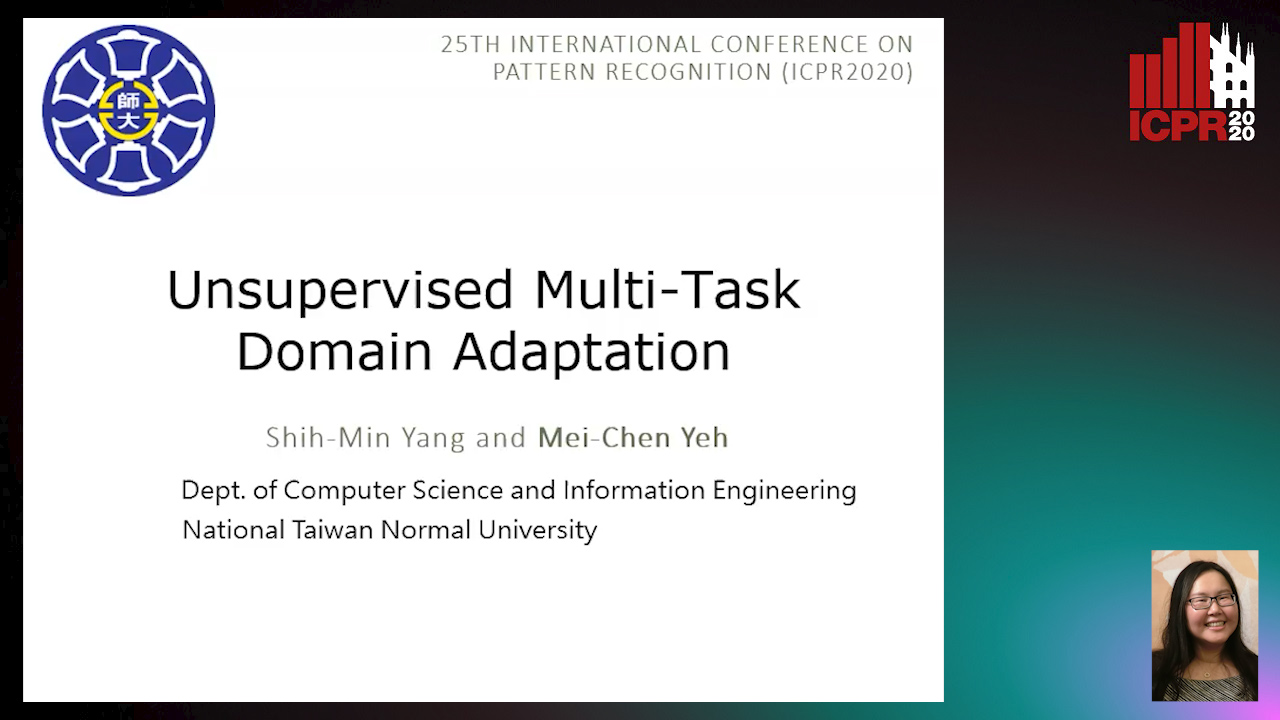
Auto-TLDR; Unsupervised Domain Adaptation with Multi-task Learning for Image Recognition
Abstract Slides Poster Similar
Multi-Domain Image-To-Image Translation with Adaptive Inference Graph
The Phuc Nguyen, Stéphane Lathuiliere, Elisa Ricci

Auto-TLDR; Adaptive Graph Structure for Multi-Domain Image-to-Image Translation
Abstract Slides Poster Similar
Local Facial Attribute Transfer through Inpainting
Ricard Durall, Franz-Josef Pfreundt, Janis Keuper

Auto-TLDR; Attribute Transfer Inpainting Generative Adversarial Network
Abstract Slides Poster Similar
Shape Consistent 2D Keypoint Estimation under Domain Shift
Levi Vasconcelos, Massimiliano Mancini, Davide Boscaini, Barbara Caputo, Elisa Ricci

Auto-TLDR; Deep Adaptation for Keypoint Prediction under Domain Shift
Abstract Slides Poster Similar
AVAE: Adversarial Variational Auto Encoder
Antoine Plumerault, Hervé Le Borgne, Celine Hudelot
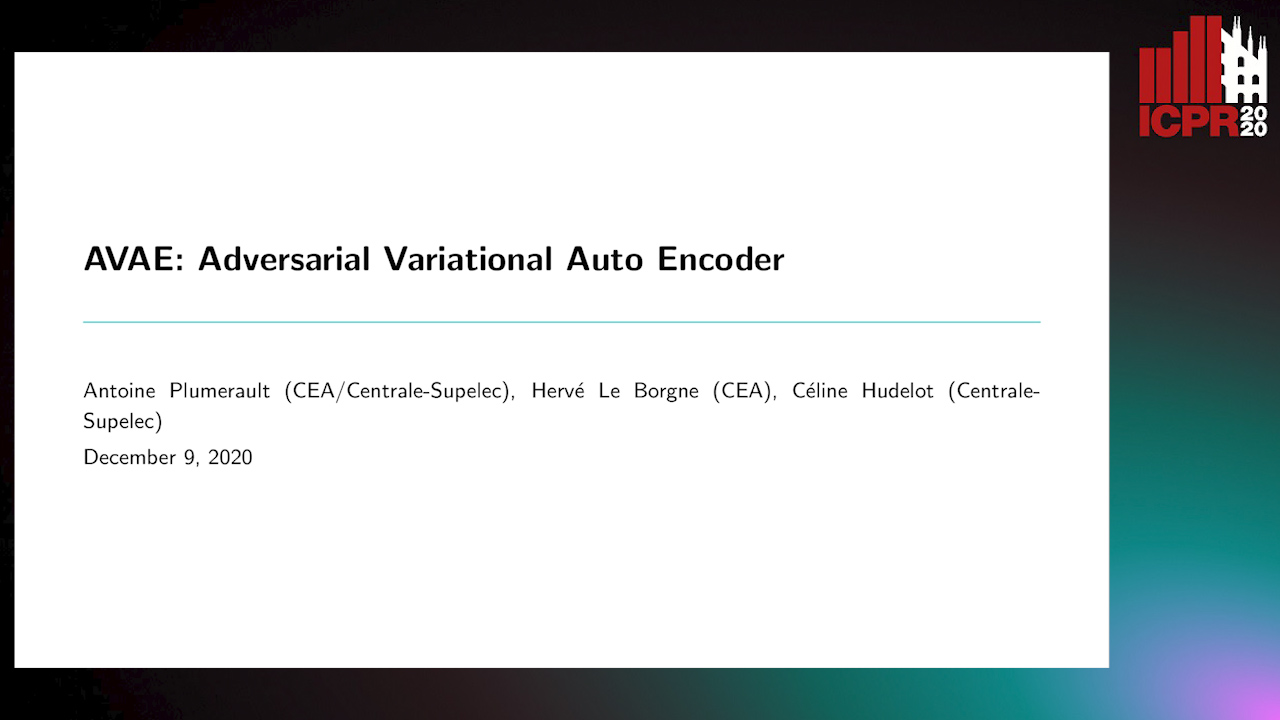
Auto-TLDR; Combining VAE and GAN for Realistic Image Generation
Abstract Slides Poster Similar
Cross-Domain Semantic Segmentation of Urban Scenes Via Multi-Level Feature Alignment
Bin Zhang, Shengjie Zhao, Rongqing Zhang
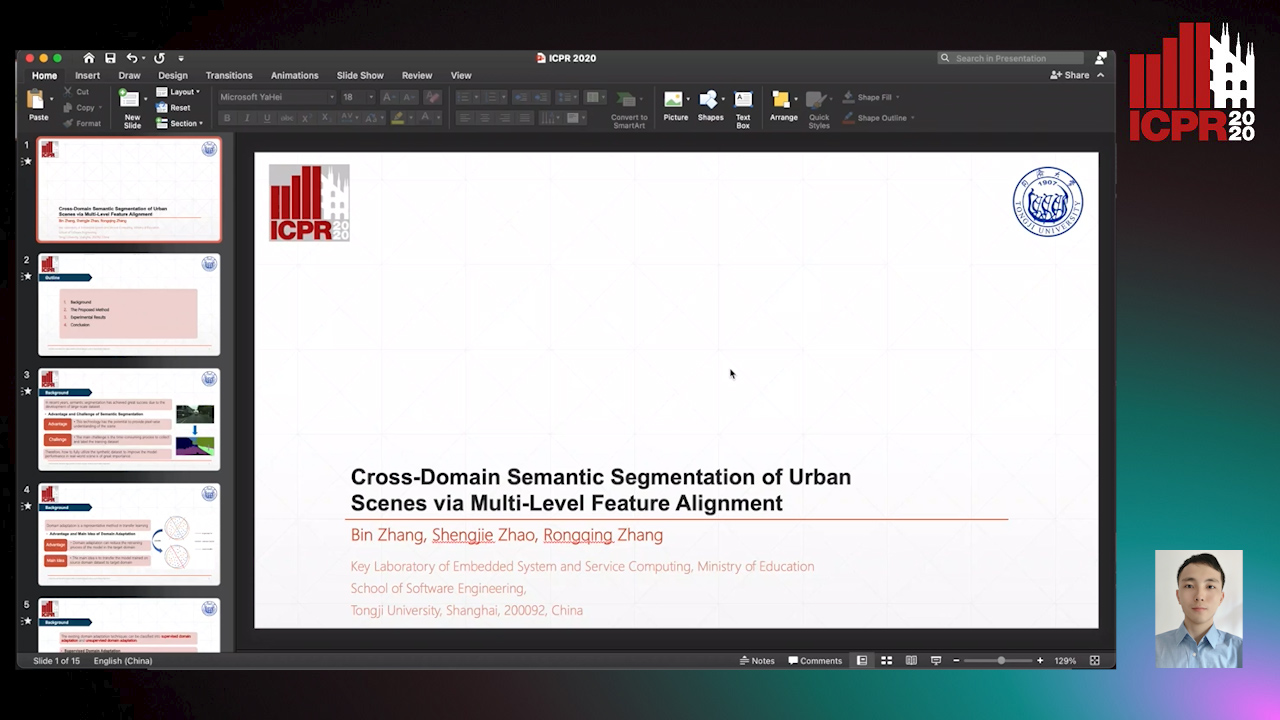
Auto-TLDR; Cross-Domain Semantic Segmentation Using Generative Adversarial Networks
Abstract Slides Poster Similar
Dual-MTGAN: Stochastic and Deterministic Motion Transfer for Image-To-Video Synthesis
Fu-En Yang, Jing-Cheng Chang, Yuan-Hao Lee, Yu-Chiang Frank Wang

Auto-TLDR; Dual Motion Transfer GAN for Convolutional Neural Networks
Abstract Slides Poster Similar
A Simple Domain Shifting Network for Generating Low Quality Images
Guruprasad Hegde, Avinash Nittur Ramesh, Kanchana Vaishnavi Gandikota, Michael Möller, Roman Obermaisser

Auto-TLDR; Robotic Image Classification Using Quality degrading networks
Abstract Slides Poster Similar
High Resolution Face Age Editing
Xu Yao, Gilles Puy, Alasdair Newson, Yann Gousseau, Pierre Hellier

Auto-TLDR; An Encoder-Decoder Architecture for Face Age editing on High Resolution Images
Abstract Slides Poster Similar
Unsupervised Domain Adaptation with Multiple Domain Discriminators and Adaptive Self-Training
Teo Spadotto, Marco Toldo, Umberto Michieli, Pietro Zanuttigh
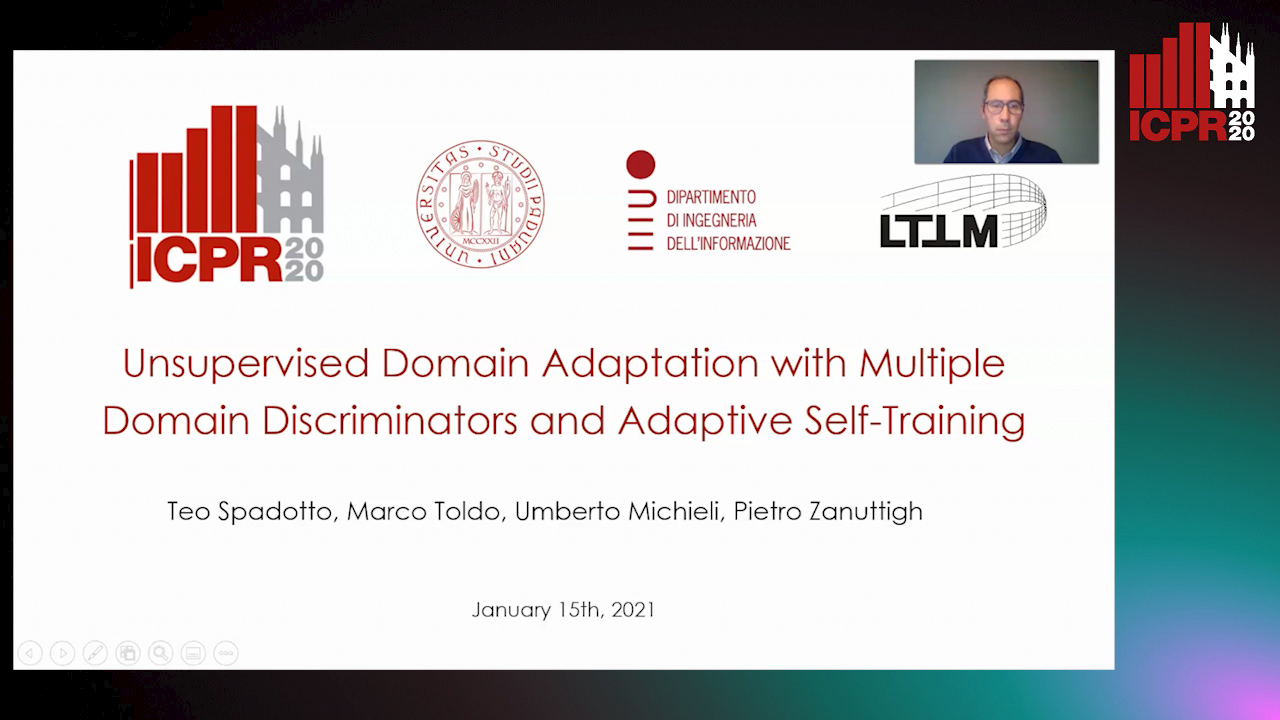
Auto-TLDR; Unsupervised Domain Adaptation for Semantic Segmentation of Urban Scenes
Abstract Slides Poster Similar
Learning Disentangled Representations for Identity Preserving Surveillance Face Camouflage
Jingzhi Li, Lutong Han, Hua Zhang, Xiaoguang Han, Jingguo Ge, Xiaochu Cao

Auto-TLDR; Individual Face Privacy under Surveillance Scenario with Multi-task Loss Function
Rethinking Domain Generalization Baselines
Francesco Cappio Borlino, Antonio D'Innocente, Tatiana Tommasi
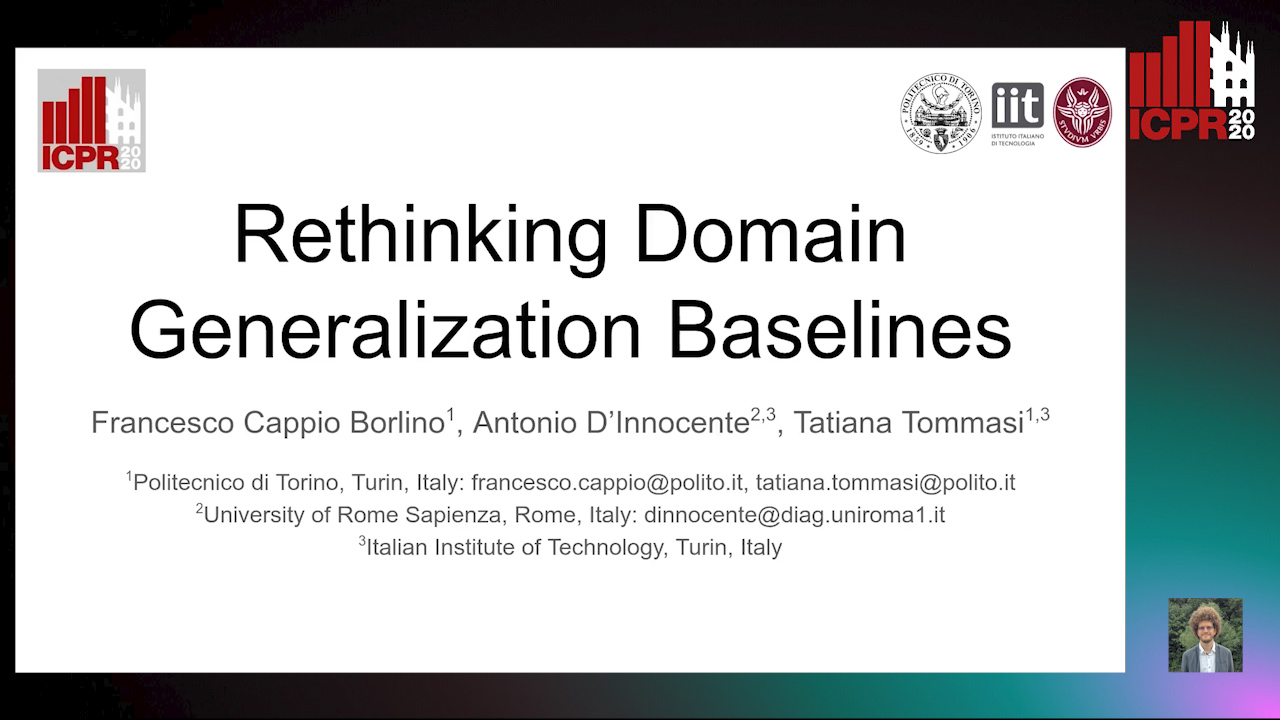
Auto-TLDR; Style Transfer Data Augmentation for Domain Generalization
Abstract Slides Poster Similar
Unsupervised Contrastive Photo-To-Caricature Translation Based on Auto-Distortion
Yuhe Ding, Xin Ma, Mandi Luo, Aihua Zheng, Ran He

Auto-TLDR; Unsupervised contrastive photo-to-caricature translation with style loss
Abstract Slides Poster Similar
GAP: Quantifying the Generative Adversarial Set and Class Feature Applicability of Deep Neural Networks
Edward Collier, Supratik Mukhopadhyay

Auto-TLDR; Approximating Adversarial Learning in Deep Neural Networks Using Set and Class Adversaries
Abstract Slides Poster Similar
Unsupervised Face Manipulation Via Hallucination
Keerthy Kusumam, Enrique Sanchez, Georgios Tzimiropoulos

Auto-TLDR; Unpaired Face Image Manipulation using Autoencoders
Abstract Slides Poster Similar
Randomized Transferable Machine

Auto-TLDR; Randomized Transferable Machine for Suboptimal Feature-based Transfer Learning
Abstract Slides Poster Similar
Text Recognition in Real Scenarios with a Few Labeled Samples
Jinghuang Lin, Cheng Zhanzhan, Fan Bai, Yi Niu, Shiliang Pu, Shuigeng Zhou

Auto-TLDR; Few-shot Adversarial Sequence Domain Adaptation for Scene Text Recognition
Abstract Slides Poster Similar
Disentangled Representation Learning for Controllable Image Synthesis: An Information-Theoretic Perspective
Shichang Tang, Xu Zhou, Xuming He, Yi Ma

Auto-TLDR; Controllable Image Synthesis in Deep Generative Models using Variational Auto-Encoder
Abstract Slides Poster Similar
Domain Generalized Person Re-Identification Via Cross-Domain Episodic Learning
Ci-Siang Lin, Yuan Chia Cheng, Yu-Chiang Frank Wang

Auto-TLDR; Domain-Invariant Person Re-identification with Episodic Learning
Abstract Slides Poster Similar
Galaxy Image Translation with Semi-Supervised Noise-Reconstructed Generative Adversarial Networks
Qiufan Lin, Dominique Fouchez, Jérôme Pasquet

Auto-TLDR; Semi-supervised Image Translation with Generative Adversarial Networks Using Paired and Unpaired Images
Abstract Slides Poster Similar
Efficient Shadow Detection and Removal Using Synthetic Data with Domain Adaptation
Rui Guo, Babajide Ayinde, Hao Sun

Auto-TLDR; Shadow Detection and Removal with Domain Adaptation and Synthetic Image Database
Class Conditional Alignment for Partial Domain Adaptation
Mohsen Kheirandishfard, Fariba Zohrizadeh, Farhad Kamangar
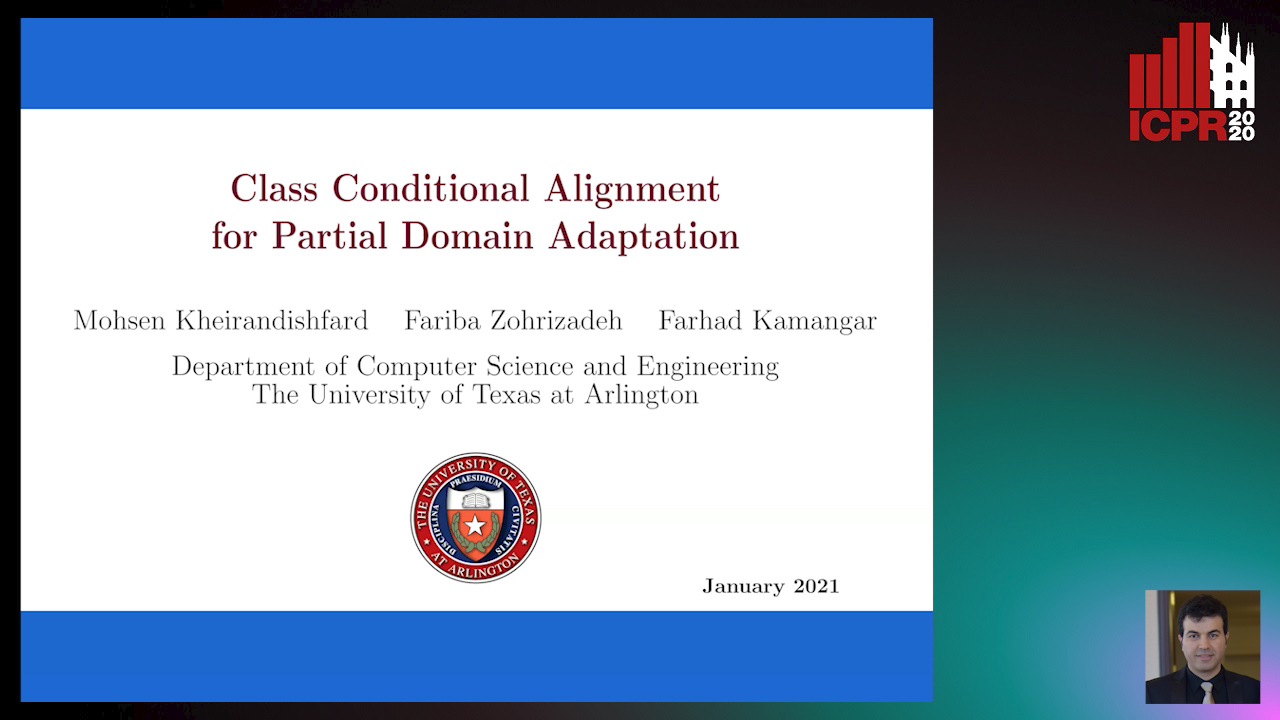
Auto-TLDR; Multi-class Adversarial Adaptation for Partial Domain Adaptation
Abstract Slides Poster Similar
Enlarging Discriminative Power by Adding an Extra Class in Unsupervised Domain Adaptation
Hai Tran, Sumyeong Ahn, Taeyoung Lee, Yung Yi

Auto-TLDR; Unsupervised Domain Adaptation using Artificial Classes
Abstract Slides Poster Similar
Respecting Domain Relations: Hypothesis Invariance for Domain Generalization
Ziqi Wang, Marco Loog, Jan Van Gemert

Auto-TLDR; Learning Hypothesis Invariant Representations for Domain Generalization
Abstract Slides Poster Similar
Cascade Attention Guided Residue Learning GAN for Cross-Modal Translation
Bin Duan, Wei Wang, Hao Tang, Hugo Latapie, Yan Yan

Auto-TLDR; Cascade Attention-Guided Residue GAN for Cross-modal Audio-Visual Learning
Abstract Slides Poster Similar
Detail Fusion GAN: High-Quality Translation for Unpaired Images with GAN-Based Data Augmentation
Ling Li, Yaochen Li, Chuan Wu, Hang Dong, Peilin Jiang, Fei Wang

Auto-TLDR; Data Augmentation with GAN-based Generative Adversarial Network
Abstract Slides Poster Similar
Disentangle, Assemble, and Synthesize: Unsupervised Learning to Disentangle Appearance and Location
Hiroaki Aizawa, Hirokatsu Kataoka, Yutaka Satoh, Kunihito Kato

Auto-TLDR; Generative Adversarial Networks with Structural Constraint for controllability of latent space
Abstract Slides Poster Similar
Mask-Based Style-Controlled Image Synthesis Using a Mask Style Encoder
Jaehyeong Cho, Wataru Shimoda, Keiji Yanai

Auto-TLDR; Style-controlled Image Synthesis from Semantic Segmentation masks using GANs
Abstract Slides Poster Similar
Unsupervised Domain Adaptation for Object Detection in Cultural Sites
Giovanni Pasqualino, Antonino Furnari, Giovanni Maria Farinella
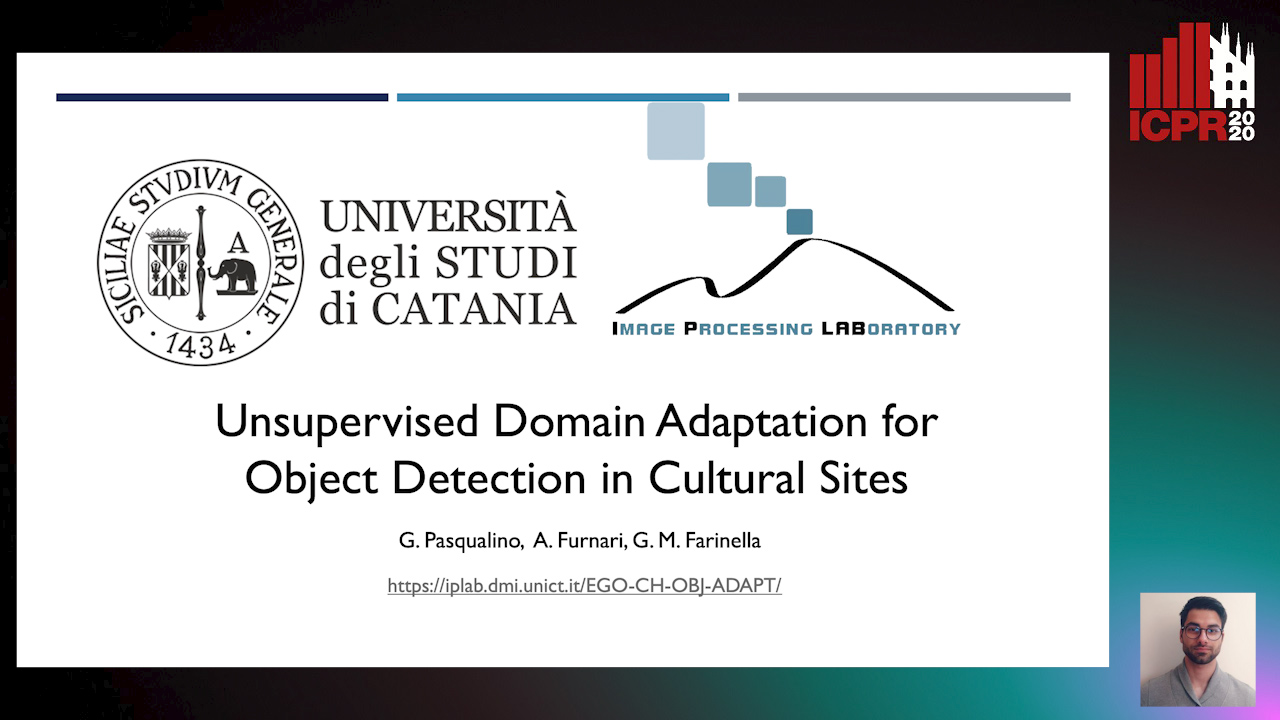
Auto-TLDR; Unsupervised Domain Adaptation for Object Detection in Cultural Sites
Exemplar Guided Cross-Spectral Face Hallucination Via Mutual Information Disentanglement
Haoxue Wu, Huaibo Huang, Aijing Yu, Jie Cao, Zhen Lei, Ran He
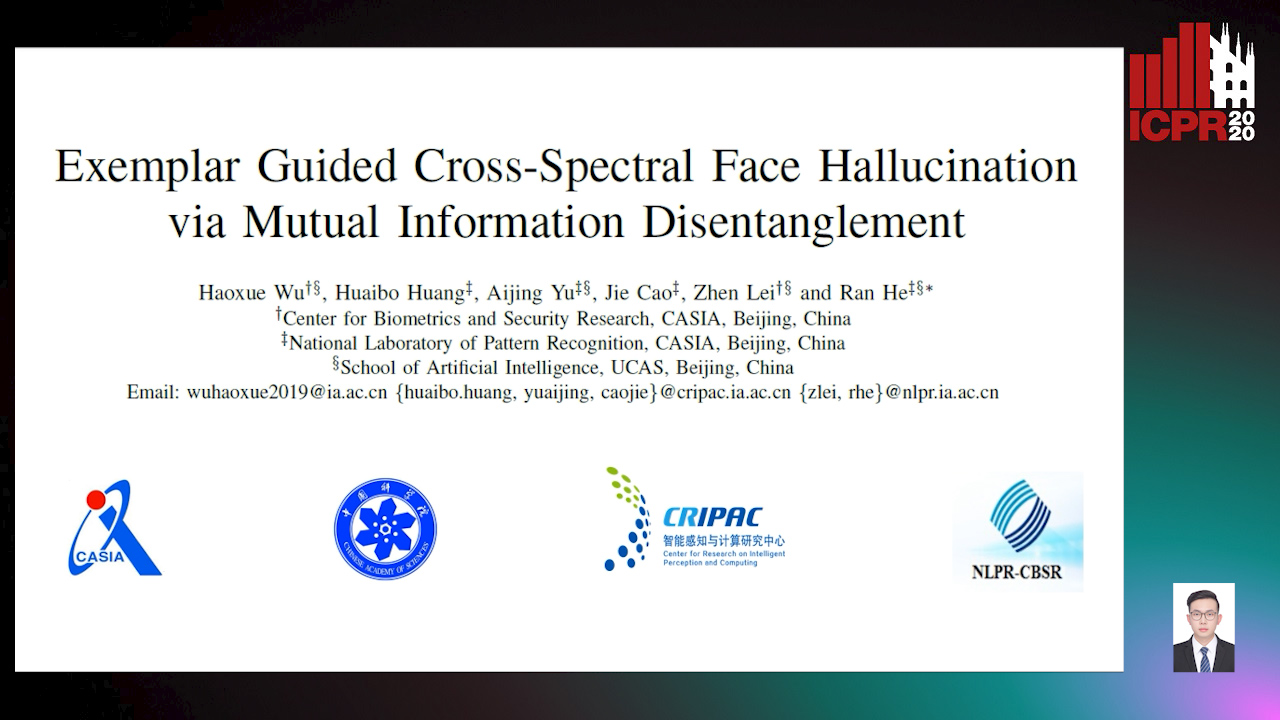
Auto-TLDR; Exemplar Guided Cross-Spectral Face Hallucination with Structural Representation Learning
Abstract Slides Poster Similar
Spatial-Aware GAN for Unsupervised Person Re-Identification
Fangneng Zhan, Changgong Zhang

Auto-TLDR; Unsupervised Unsupervised Domain Adaptation for Person Re-Identification
Controllable Face Aging
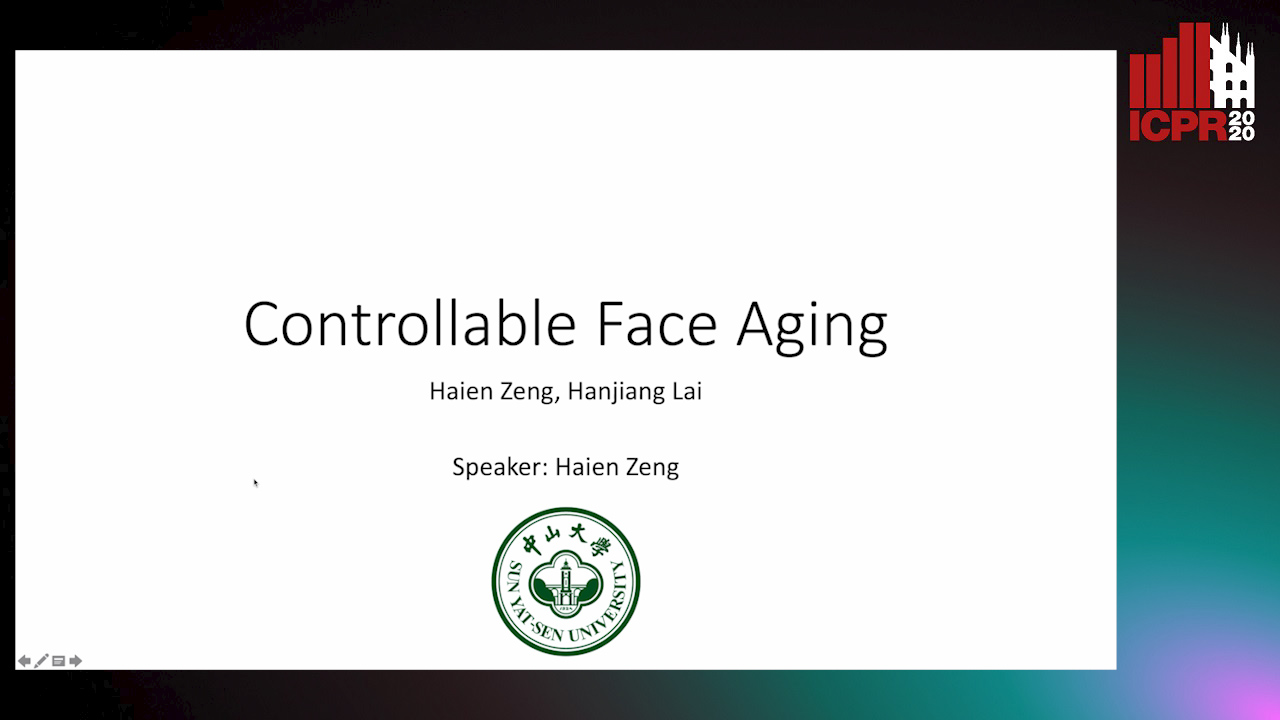
Auto-TLDR; A controllable face aging method via attribute disentanglement generative adversarial network
Abstract Slides Poster Similar
DAPC: Domain Adaptation People Counting Via Style-Level Transfer Learning and Scene-Aware Estimation
Na Jiang, Xingsen Wen, Zhiping Shi
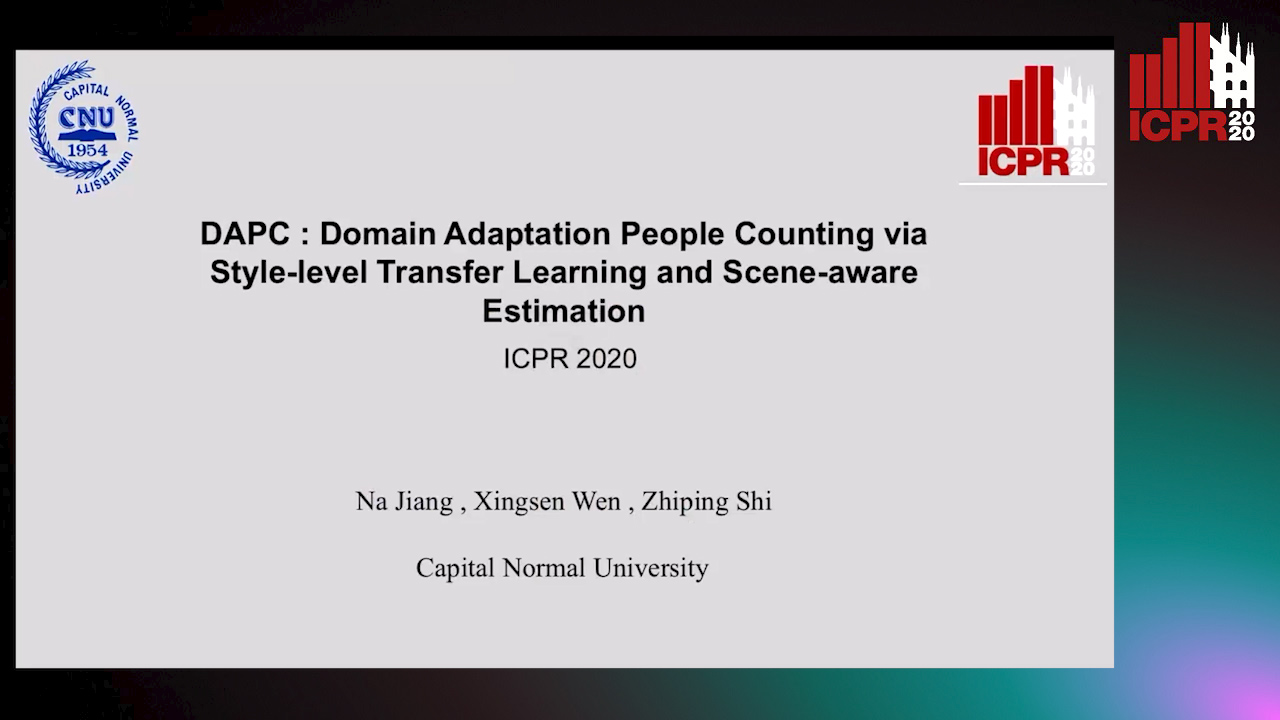
Auto-TLDR; Domain Adaptation People counting via Style-Level Transfer Learning and Scene-Aware Estimation
Abstract Slides Poster Similar
On the Evaluation of Generative Adversarial Networks by Discriminative Models
Amirsina Torfi, Mohammadreza Beyki, Edward Alan Fox

Auto-TLDR; Domain-agnostic GAN Evaluation with Siamese Neural Networks
Abstract Slides Poster Similar
Semantics-Guided Representation Learning with Applications to Visual Synthesis
Jia-Wei Yan, Ci-Siang Lin, Fu-En Yang, Yu-Jhe Li, Yu-Chiang Frank Wang
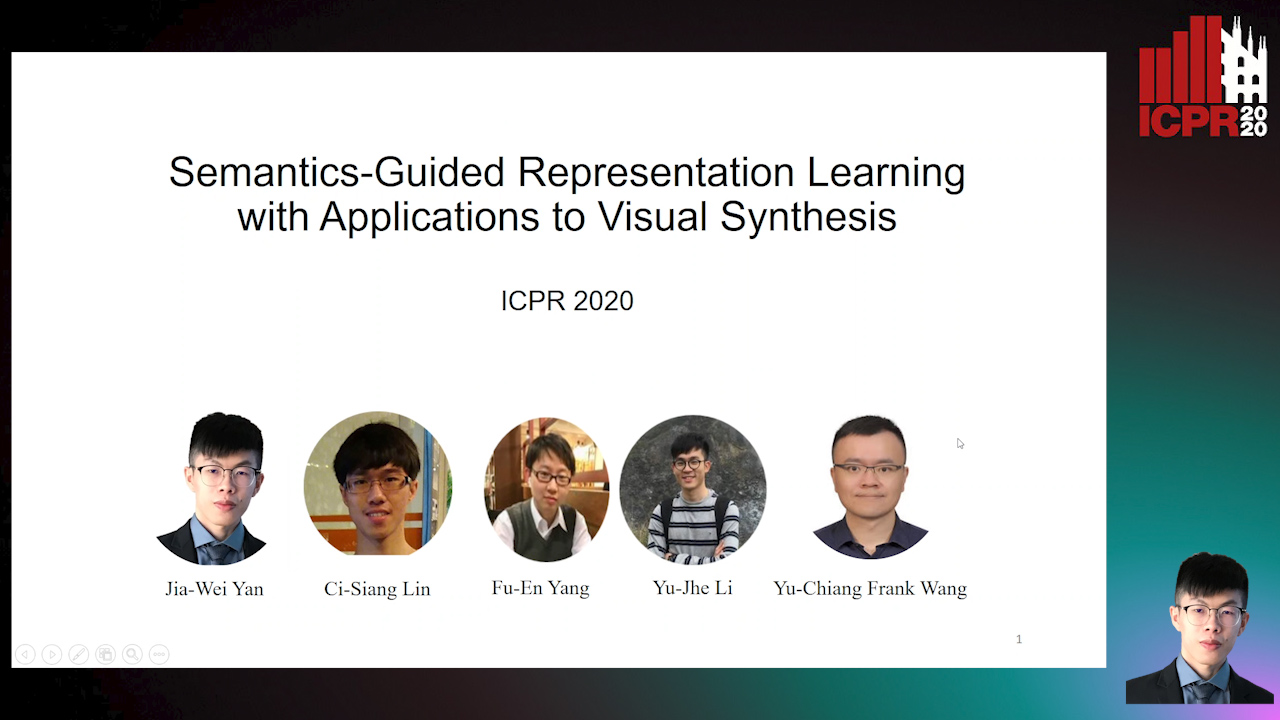
Auto-TLDR; Learning Interpretable and Interpolatable Latent Representations for Visual Synthesis
Abstract Slides Poster Similar
Attributes Aware Face Generation with Generative Adversarial Networks
Zheng Yuan, Jie Zhang, Shiguang Shan, Xilin Chen
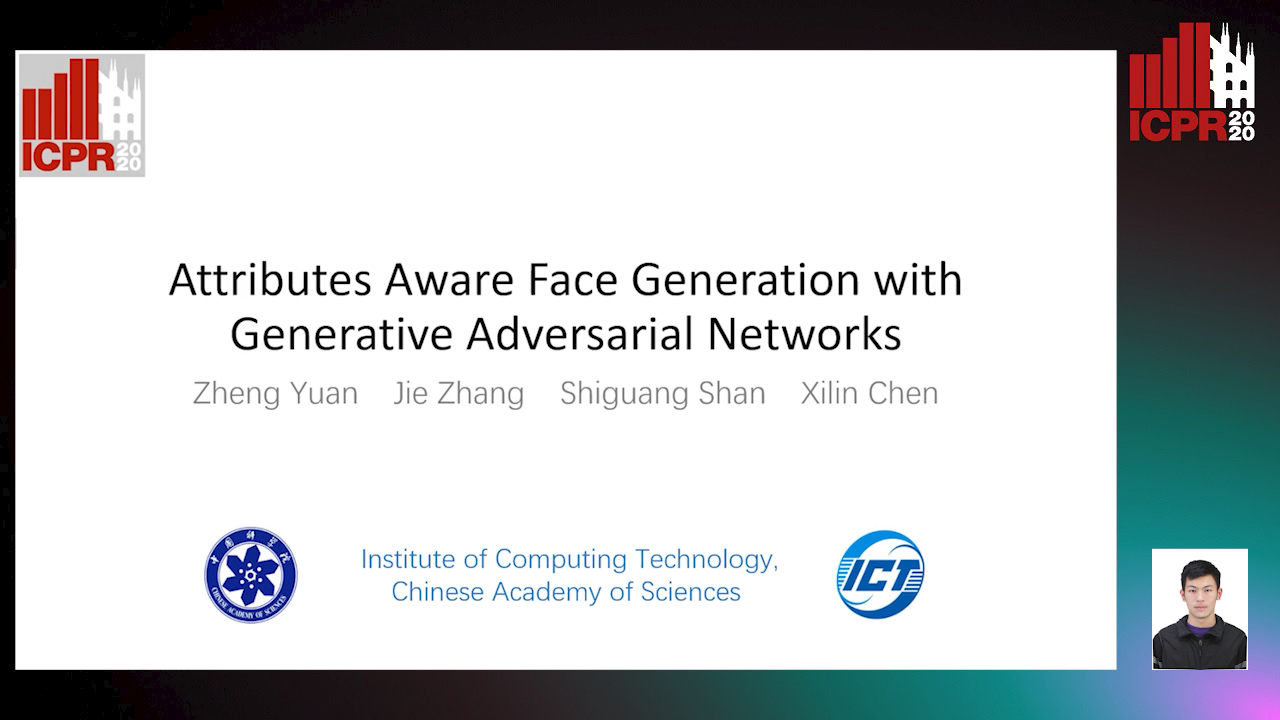
Auto-TLDR; AFGAN: A Generative Adversarial Network for Attributes Aware Face Image Generation
Abstract Slides Poster Similar
Adversarially Constrained Interpolation for Unsupervised Domain Adaptation
Mohamed Azzam, Aurele Tohokantche Gnanha, Hau-San Wong, Si Wu
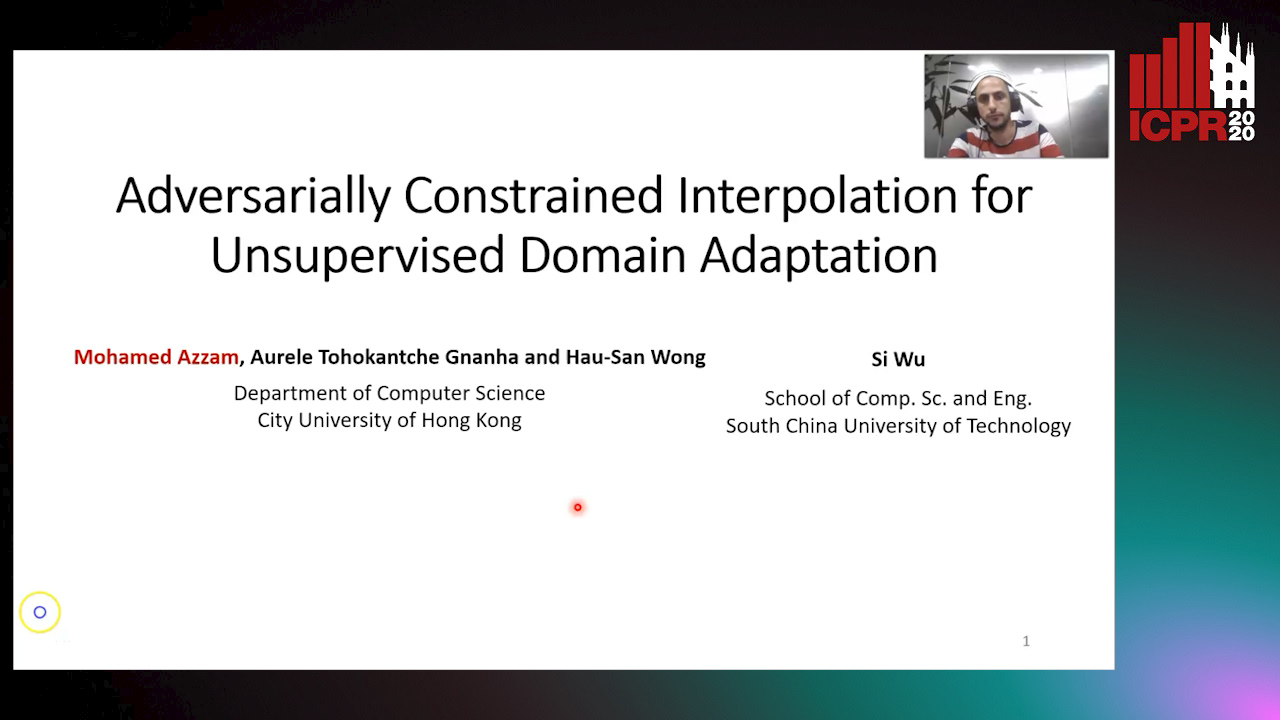
Auto-TLDR; Unsupervised Domain Adaptation with Domain Mixup Strategy
Abstract Slides Poster Similar
Semantic-Guided Inpainting Network for Complex Urban Scenes Manipulation
Pierfrancesco Ardino, Yahui Liu, Elisa Ricci, Bruno Lepri, Marco De Nadai

Auto-TLDR; Semantic-Guided Inpainting of Complex Urban Scene Using Semantic Segmentation and Generation
Abstract Slides Poster Similar
Open Set Domain Recognition Via Attention-Based GCN and Semantic Matching Optimization
Xinxing He, Yuan Yuan, Zhiyu Jiang

Auto-TLDR; Attention-based GCN and Semantic Matching Optimization for Open Set Domain Recognition
Abstract Slides Poster Similar
Augmented Cyclic Consistency Regularization for Unpaired Image-To-Image Translation
Takehiko Ohkawa, Naoto Inoue, Hirokatsu Kataoka, Nakamasa Inoue

Auto-TLDR; Augmented Cyclic Consistency Regularization for Unpaired Image-to-Image Translation
Abstract Slides Poster Similar
Pose Variation Adaptation for Person Re-Identification
Lei Zhang, Na Jiang, Qishuai Diao, Yue Xu, Zhong Zhou, Wei Wu

Auto-TLDR; Pose Transfer Generative Adversarial Network for Person Re-identification
Abstract Slides Poster Similar
Coherence and Identity Learning for Arbitrary-Length Face Video Generation
Shuquan Ye, Chu Han, Jiaying Lin, Guoqiang Han, Shengfeng He
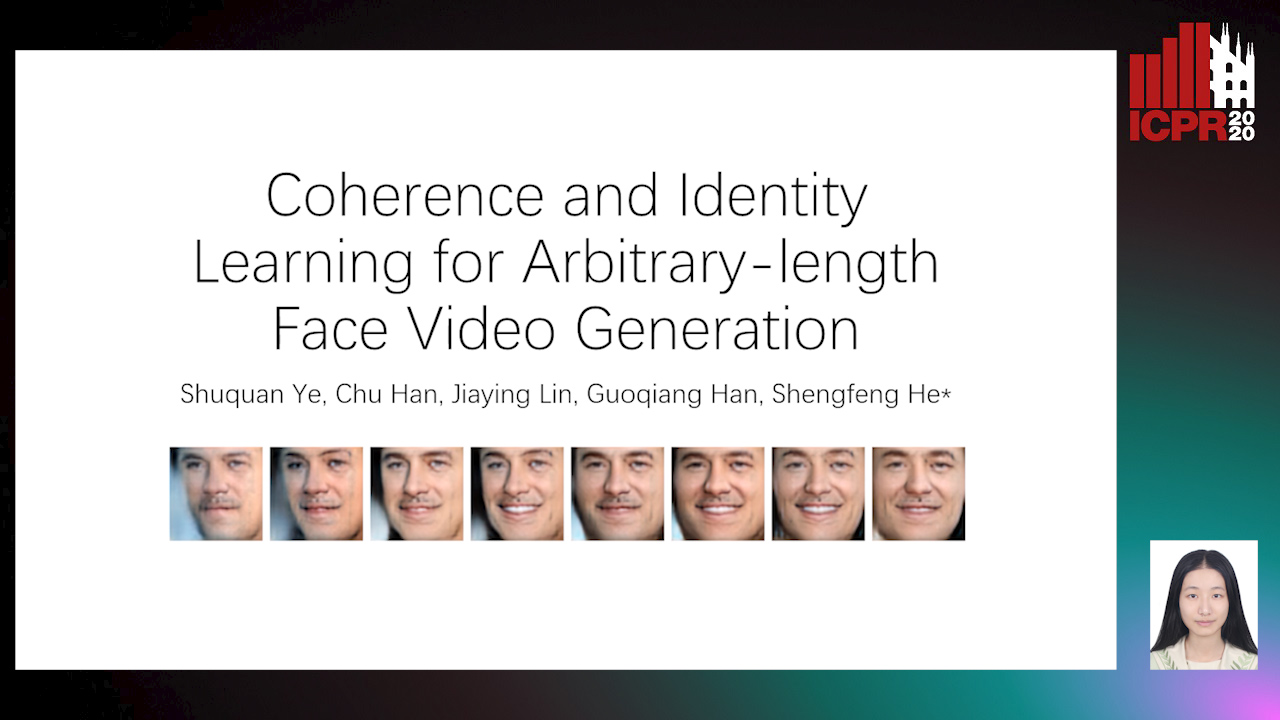
Auto-TLDR; Face Video Synthesis Using Identity-Aware GAN and Face Coherence Network
Abstract Slides Poster Similar
Contrastive Data Learning for Facial Pose and Illumination Normalization
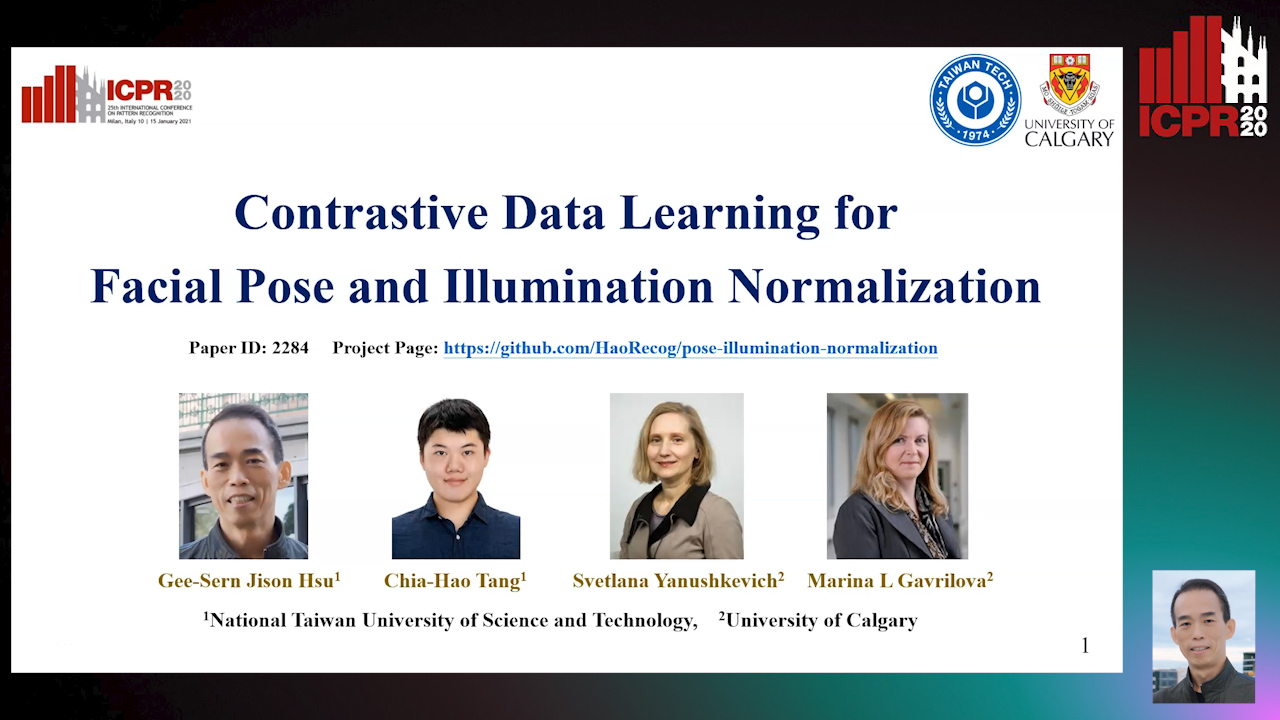
Auto-TLDR; Pose and Illumination Normalization with Contrast Data Learning for Face Recognition
Abstract Slides Poster Similar
Learning Interpretable Representation for 3D Point Clouds
Feng-Guang Su, Ci-Siang Lin, Yu-Chiang Frank Wang
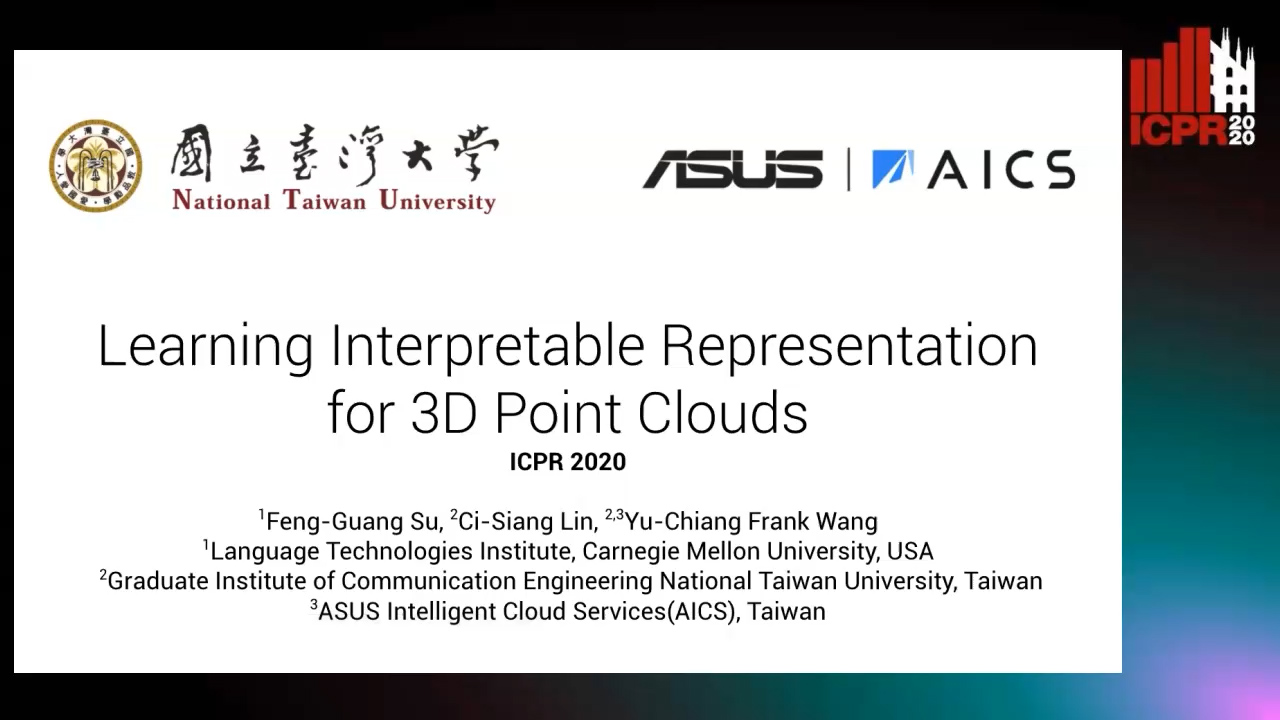
Auto-TLDR; Disentangling Body-type and Pose Information from 3D Point Clouds Using Adversarial Learning
Abstract Slides Poster Similar
Generative Latent Implicit Conditional Optimization When Learning from Small Sample

Auto-TLDR; GLICO: Generative Latent Implicit Conditional Optimization for Small Sample Learning
Abstract Slides Poster Similar
Beyond the Deep Metric Learning: Enhance the Cross-Modal Matching with Adversarial Discriminative Domain Regularization
Li Ren, Kai Li, Liqiang Wang, Kien Hua

Auto-TLDR; Adversarial Discriminative Domain Regularization for Efficient Cross-Modal Matching
Abstract Slides Poster Similar
Unsupervised Learning of Landmarks Based on Inter-Intra Subject Consistencies
Weijian Li, Haofu Liao, Shun Miao, Le Lu, Jiebo Luo
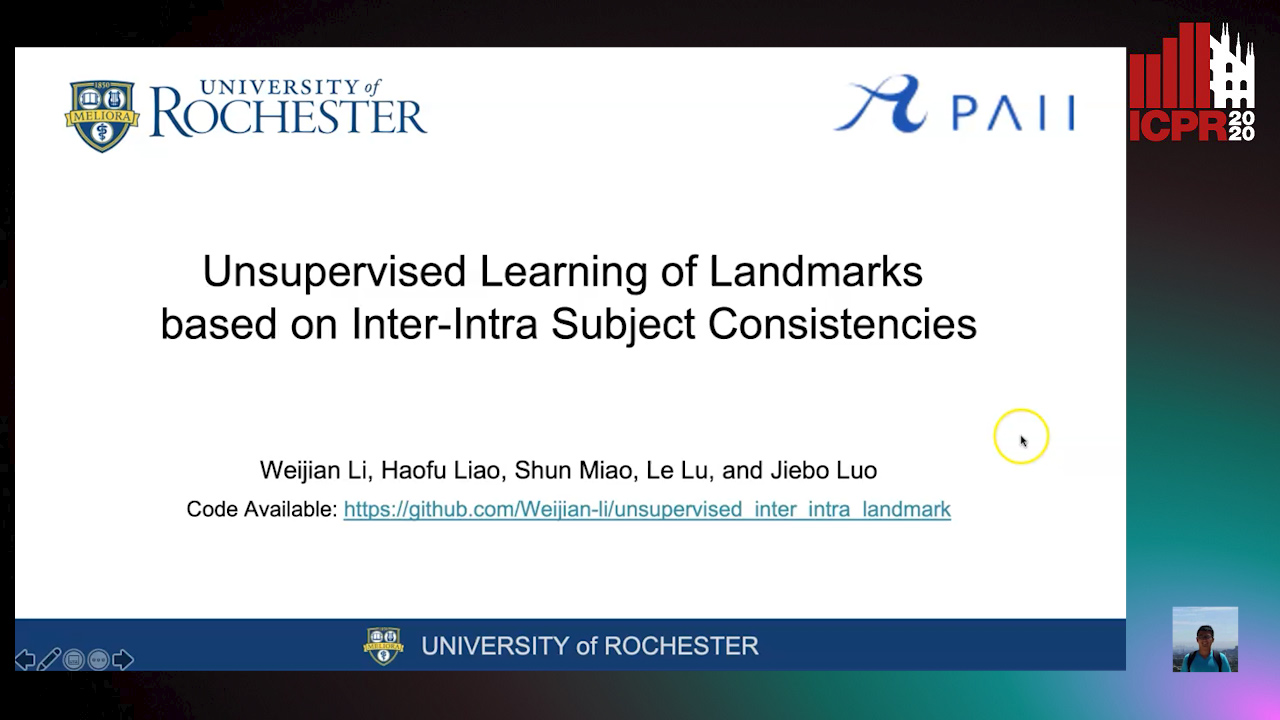
Auto-TLDR; Unsupervised Learning for Facial Landmark Discovery using Inter-subject Landmark consistencies
SATGAN: Augmenting Age Biased Dataset for Cross-Age Face Recognition
Wenshuang Liu, Wenting Chen, Yuanlue Zhu, Linlin Shen

Auto-TLDR; SATGAN: Stable Age Translation GAN for Cross-Age Face Recognition
Abstract Slides Poster Similar